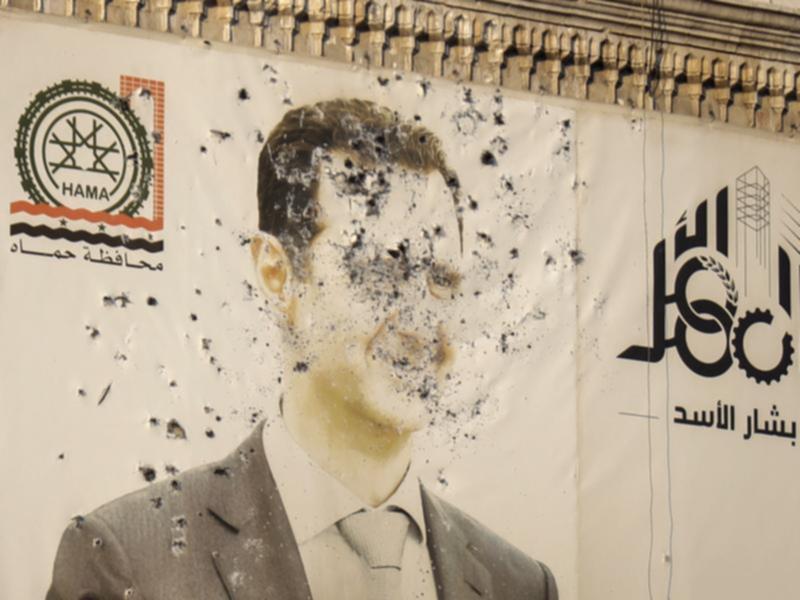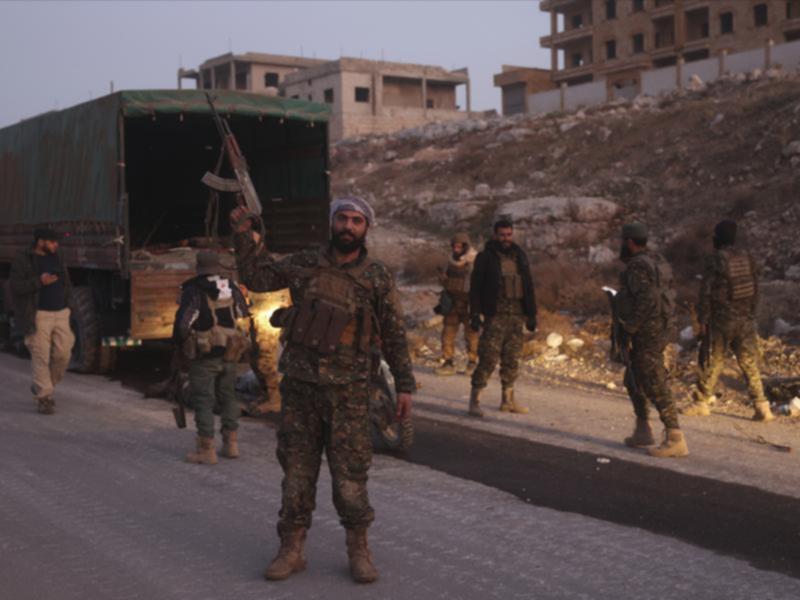The Washington Post: Syrian rebels threaten Damascus, Assad from north and south

President Bashar al-Assad’s control of Syria’s south crumbled on Saturday as rebels seized multiple cities and closed in on Damascus, the capital, posing one of the most acute threats to his rule in 13 years of civil war.
Rebels accumulated regime territory at lighting pace as an offensive from the north, led by the Islamist militant group Hayat Tahrir al-Sham, ignited opposition factions elsewhere in the country. Syrian troops fled en masse, according to Iraqi officials, and thousands entered Iraq.
A newly announced rebel group took control of the southwestern city of Daraa, the birthplace of the 2011 protest movement to oust Assad, and said they would continue their push “until the liberation of Damascus.” Druze forces seized the southeastern city of Sweida, activists there said. Rebels also claimed southern Quneitra, near the border with Israel.
Sign up to The Nightly's newsletters.
Get the first look at the digital newspaper, curated daily stories and breaking headlines delivered to your inbox.
By continuing you agree to our Terms and Privacy Policy.HTS, meanwhile, said it was pushing into Homs, north of Damascus, and was within 12 miles of the capital’s southern gate. Stunned residents there were buying supplies and hunkering down in homes and apartments.
The Syrian military said it had “carried out repositioning” in the south but denied withdrawals from the countryside around Damascus. Syria’s cabinet convened for an emergency meeting to address the attacks by “armed terrorist gangs” on “a number of cities and regions.”
The rebel advances on Saturday added to stunning gains over the past week.
The HTS-led offensive has seized Aleppo, Syria’s largest city, and Hama, its fourth largest. Homs, capital of Syria’s largest governorate, is strategically important; it lies at the crossroads of the north-south highway that connects Aleppo and Damascus and the east-west highway that connects the desert and the Mediterranean Sea.
The rebels have taken advantage of shifts in the regional balance of power and the distraction of Assad’s allies. Russia, which has backed Assad with airstrikes since 2015, is now bogged down in its war in Ukraine. Iran has been shaken by its growing conflict with Israel, which has stepped up attacks against the Islamic republic and its proxies including Hezbollah. The Shiite group, based in Lebanon, has forces in Syria supporting Assad.

The Syrian leader has managed to cling to power through a civil war that has killed tens of thousands of people and sent millions fleeing the country.
But his patrons now to have little faith in his regime’s ability to survive. Iran began withdrawing some of its military commanders from Syria on Friday, according to an Iraqi official and a regional diplomat.
It’s also evacuating nonessential diplomatic staff and family members from Damascus, according to the Iraqi official, who said “they feared they would be trapped after the collapse.”
The officials, like others in this report, spoke on the condition of anonymity to discuss the sensitive matter.
Maj. Gen. Abbas Ibrahim, a former intelligence chief in Lebanon, said Iranian movements suggest Tehran believes Assad will be unable to hold back the rebel advances.
“For the Iranians, to choose between their country and Hezbollah, certainly they chose their safety over Hezbollah,” he said. Thousands of Hezbollah fighters deployed to Syria last week after Aleppo fell.
They were unable to stop the rebel advance from reaching Homs, about 20 miles from Lebanon’s border. While Hezbollah is a key ally of the Assad regime, Ibrahim, said the group mobilized to protect its own interests.
“It is Hezbollah’s interest to defend Homs,” he said. If the rebel forces take Homs, “they would be close to Tripoli in north Lebanon and would impact the whole north of Lebanon.”
Russia has also urged its citizens to leave the country. Russian Foreign Minister Sergei Lavrov, asked on Saturday whether Moscow believes the Syrian president can hang on to power, told Al Jazeera he was “not in the business of guessing.”
Regime forces appear to be giving up territory with little fight to focus on Damascus, its surroundings, Homs and the coast, said Haid Haid, a research fellow at London-based Chatham House.
“The regime has given up on all nonstrategic areas,” he said. Iraqi government spokesman Bassim Al-Awadi told the news network Rudaw that 2000 Syrian soldiers were now in Iraq.
Two senior Iraqi army officers estimated their number to be the equivalent of three military divisions. A third official put the number at 1500. The government in Baghdad gave the Syrian troops permission to enter through the Al-Qaim border crossing.
HTS leader Abu Mohammad al-Jolani was formerly affiliated with al-Qaeda but has broken ties and is attempting to present himself as the face of a unified, more moderate opposition.
His group said it had taken control of a military engineering collage north of Homs on Saturday evening. In a bid to reassure panicked residents and foreign aid groups, it said all government and international institutions, including the United Nations, were “serving the people, and it is our duty to protect and preserve them.”

Rebel gains in the south make the battle for Homs, 100 miles north of Damascus, still more important. Capturing Syria’s third largest city would enable the rebels to pressure the capital from the north and the south. A rebel victory in Homs would cleave Asaad’s territory in two, splitting the capital from regime strongholds on the Mediterranean coast.
In Damascus, the rebels are likely to find support in restive suburbs that have long resisted Assad family rule. One video showed a statue of former president Hafez al-Assad, Bashar’s father, hacked down with axes in Jaramana, less then ten miles from the presidential palace.
It was unclear whether rebel groups in the south were coordinating with HTS or had simply jumped on the opportunity to make gains against Syrian forces in disarray.
“Different groups are racing to capture as many areas as possible,” Haid said.
The Southern Operations Room, a newly announced faction, said it had taken control of Daraa governorate. Videos posted online showed a statue of Hafez al-Assad being toppled in Daraa city.
The Syrian state news agency SANA said that “the sounds heard in some areas of the southern Damascus countryside are of long-range targeting and shooting at terrorist gatherings in Daraa.”
Sweida, inhabited by members of the Druze religious minority, was under the control of Druze factions on Saturday morning after the army withdrew, according to a local activist who spoke on the condition of anonymity out of concern for security.
- - -
Mustafa Salim and Meg Kelly contributed to this report.
© 2024 , The Washington Post
